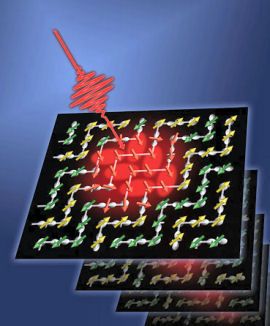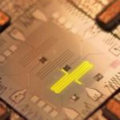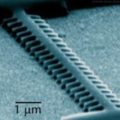
Scientists in Athens, Ohio, have found a way in which they can make the artificial atoms known as quantum dots communicate with one another using light energy. The researchers that made the breakthrough believe it to be a crucial step toward making next generation quantum computers a reality.
Quantum dots – also known as semiconductor nanocrystals – are minute, manufactured spherical crystals about 5 nanometers in diameter. It’s widely believed that quantum dots will prove to be a key component in future nanoscale technologies. However, previous attempts at using light to power communication between quantum dots have ended in failure due to irregular energy exchanges, but the Ohio study appears to have overcome these hurdles.
The potential to transmit data via light waves alone is an encouraging result, as it presents scientists with the possibility of developing an optical quantum computer. Such a device may one day replace conventional computer technologies that rely on using an electrical charge to transmit data. “The idea is to make the [computing] process faster and smaller,” said Al-Ahmadi. “Using light energy instead of electricity also has the added benefit of keeping computer temperatures to a minimum.”
The potential applications for light-fueled quantum dots are countless, but the first developments will likely be imaging equipment used in medicine. Quantum dots injected into a patient, for example, could be tracked using another device containing the receiving quantum dots. Co-researcher Sergio Ulloa says that biology research has already had great success with this type of imaging in mouse models. The new generation imaging devices are touted to replace traditional contrast media, like x-rays, that have inherent risks.











![[NEW ADDED] Huge Mixed Manga Lot, all English | Good Condition, lightly read picture](/store/img/JxsAAOSwnTtmlYhX/s-l225//-NEW-ADDED-Huge-Mixed-Manga-Lot-all-English-Good-C.jpg)






Comments are closed.